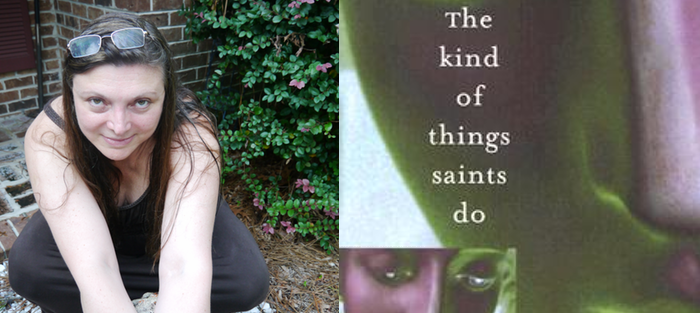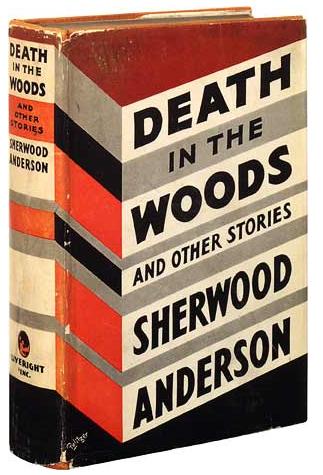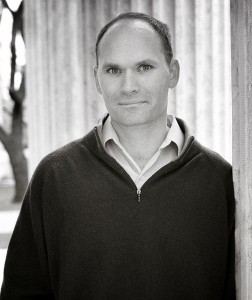For years, I was a fiction writer with a dirty secret: although I had attended and graduated from two well-celebrated MFA programs in creative writing, I was afraid of writing outside of the boundaries of my personal experience, clinging to the old adage of writing what you know, and ignoring what one of my earliest mentors used to announce with panache to the class: “What you don’t know would make a great story!”
I was afraid because it isn’t exactly so simple to go to what was then little more than a digitized card catalog and research phrases like “process for mixing methamphetamine” or “those squiggly things that you put into the holes of tents to make them stick to the ground.” Back then, training in research involved indexes and annotated bibliographies, not Google and Wikipedia.
But there was also another kind of hesitation, the fear to tread on alien worlds, to step on other people’s lives with clumsy feet. In the days of my schooling, teachers still insisted that we write only from the perspective of our own race, for instance, in order not to trample on cultural sensitivities; often they also discouraged our trying to understand a different genre’s perspective, strategies of avoidance that sooner or later were bound to confine us to the narrow and the trite.
It wasn’t until my senior year with my second MFA that I had the courage to write a short story based on something an ex boyfriend had told me: he had been hiking the Arizona desert with his elderly father, a feat that turned out to be clearly above his father’s physical abilities and that became even scarier when they were surprised by a flashflood that nearly washed them out.
I had never been hiking, and I had never been in the desert, or anywhere near Arizona. The closest I’d ever come to camping in my life was staking out one night at a particularly sleazy budget motel for an emergency stop on a trip from Iowa to Miami. Not only was I missing the basic details of the landscape for the story, lacking the vocabulary for the objects that would hinge prominently on the subtleties of technical preparation, but I also felt inadequate at portraying the mood for an outdoor adventure of that sort, lacking myself the experience of camping and, for that matter, of being a man.
Writing that story wasn’t just a question of learning how to write strong search terms; it was one about learning courage, about learning to find faith in my vision, even if it meant I had to reach out for help from total strangers in outdoor sports equipment stores, admitting my ignorance, and relying on their kindness to spare me that five-minute advice that would rescue my scene, or at least, help me envision it more clearly.
But it was worth breaking out of my shell to find that I could write a story about camping enthusiasts without being one myself. It suddenly opened up opportunities for stories that up to then I had carefully excluded and set aside. My mentor had been right: what I didn’t know would make for a pretty good story.
My students today don’t face the same obstacles I did then. The advent of Google Searches and Wikipedia might have watered down the quality of some research, but it has also solved pragmatic problems for fiction writers; it has opened up the landscape for the kind of chair anthropology, or chair forensic detective work that writers often need to engage in. All the same, when I began to teach fiction myself, I felt that I owed my students something more profound than a truism on writing what you don’t know. I wanted them to have something that challenged their imagination as well as their research skills, something that showed them that there are opportunities for stories outside of the tired limitations of the college experience; something that would lend them the courage to break outside their comfort zones.
My colleagues who teach creative nonfiction have done a very good job of teaching students techniques of immersion, as well as to identify ethical ambiguities involved in writing about others, but I feel that we fiction writers haven’t been quite as thorough in exploring the mine-filled intersections of fact and fiction, nor in equipping our students to take informed choices about the way they go about altering or warping actual events for the sake of story. In this spirit, I crafted an assignment for an undergraduate fiction workshop that I call, rather unimaginatively perhaps, the Realist Researched Story. While I use the assignment primarily for the undergraduate course, my advanced graduate courses also benefit from satellite projects that were conceived out of this original idea, which essentially requires students to do a little legwork before they begin to write.
The assignment resembles something like writing a historical fiction piece, except that the story doesn’t necessarily have to be set in a different historical era; it merely has to include an element of research that must feature prominently in the plot. In requiring this factual element to take a role in the construction of a story, students are encouraged to move beyond the worn out dynamics of unplanned parenting, identity crises, reckless self-medication, and other such revisited themes that infect so predictably the undergraduate workshop. Rather they are invited to imagine and explore experiences that differ from theirs, but that nonetheless touch upon those dilemmas of human living that are as unique as they are universal.
This assignment takes several weeks from start to workshop. In the days leading to the assignment, we engage in a variety of activities designed to help students lose the fear of research, to hone in on important details that help them imagine larger issues, and to focus on aspects of human experience that transcend time and geography.
I begin by discussing first the importance of image in realist fiction. Although students come to my class supposedly having already completed one semester of creative writing, the variety of teachers and methods used can create some discrepancies. For this type of assignment, image is key, not only to crafting an engaging story with important emotional ramifications, but also to organizing what may otherwise be sprawling research in the few short weeks that we have the luxury to dedicate to the completion of a piece.
When we first start, many of my students cannot distinguish between an image and a good description. To emphasize what sets the two apart, we do an activity, one that asks students to close their eyes and meditate on the earliest memory they have of their own childhood. Most of the time, students will remember a moment that has some significant implication to forming their personality and their character later in life. I give them examples from my own life: I remember first trying to hold my baby brother, pulling him out of the crib and finding that he’s too heavy and I can barely hold on. I remember that image, I tell them, because it shows something that still persists with me to this day: I tend to take on responsibilities that are too overwhelming, and then I cannot let go of them, as if letting go would mean dropping a baby.
Soon, my students, too, are able to read into their snippet of memory something larger than what the description suggests. This simple exercise never fails to help students connect the sensory details with much larger intellectual and emotional implications. The emotion that the single scene evokes suggests a story beyond the margins. That is the salient difference between a good description and the cornerstone of narrative that is image.
With these foundations, we go on to review a few hint fiction pieces. Some of my favorites are “Through Tiny Windows” from Barry Napier, or Edith Perlman’s “Golden Years” (both stories can be found on the NPR website in an article titled “Hint Fiction Celebrates The (Extremely) Short Story”). Hint fiction, a story in twenty-five words, demonstrates to students how a well-culled image can convey in extreme succinctness a great deal of psychological and emotional backdrop. It also helps us to reinforce the centrality of conflict in fiction.
In the next class, we move towards something more sophisticated, an activity that involves several steps. For this activity, the literature that has worked best for me is a chapter from a book by historian Karl Jacoby titled Shadows at Dawn. I have a selection of passages from a chapter called “The Americans” that cobbles together the political climate as well as the social dynamics, personal beliefs, and prejudices of the Mexican-American borderland wars. There are other narratives that may be useful for this assignment, but I have chosen this one because it is speckled with a number of gruesome, vivid images concerning the cruelties and the petty misunderstanding that engaged Americans, Apaches, and Mexicans in a vicious circle of violence and war.
We read them in class. I find that it’s best not to “prepare” students for the raw reaction of the personal reports that Jacoby has culled out from letters, editorials, and personal testimonies. I like the immediacy of the shock, and the fact that many of them are written in the voice of the time. After we finish reading, I ask students to make a list of the things they remember most vividly. Many of them chose the same episodes: an American soldier throwing an Apache baby into a roaring fire after he’s played with the boy on his knee; a band of Americans using the brain of an Apache chieftain to tan the hide of a deer, and so on.
Many also focus on images that aren’t quite as violent, images that reveal more subtle nuances about the spirit of the time. We share our list in order of the things that affected us the most. This sharing helps us to discuss with each other what about these details we found most memorable or disconcerting. We do not always agree on which are more visceral, but we all agree on the reasons we give each other for thinking them so, and these in turn invite us to imagine larger situations or circumstances surrounding these moments; it leads us to wondering about the inner lives of these individuals.
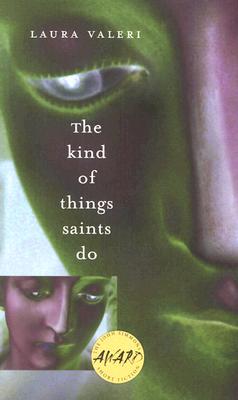 I then ask my students to pick one of the images they have listed, and to write a simple scene from one of the witness’s perspective. We spend about ten or fifteen minutes on this, and we share these too. More important is a follow up list of reflective questions that students must consider: what did you find easiest to do when writing the scene; what did you find most difficult; what did you wish you knew more of?
I then ask my students to pick one of the images they have listed, and to write a simple scene from one of the witness’s perspective. We spend about ten or fifteen minutes on this, and we share these too. More important is a follow up list of reflective questions that students must consider: what did you find easiest to do when writing the scene; what did you find most difficult; what did you wish you knew more of?
Together, we discover that writing about a different time is less challenging if we are able to connect with emotional or psychological motivations; students wish that they knew more about the political dynamics that led up to the confrontations precisely for that reason, but they also find it easy to match an emotion to a particularly eventful moment. On the flip side, they find challenges when trying to recall specific details in the narrative: what clothes did these people wear? What did the landscape look like? What accent or diction affected their speech? Was it hot or dry or cold and wet? What did the furniture look like?
We discuss how we would find these details, the resources we could consult, considering both traditional and more informal sources. Although I always alert a resident librarian to the assignment and direct my students to her office, they nonetheless also quickly hone in to the benefit of various contemporary and ready available resources like YouTube, blogs, court transcripts, podcasts, etc. Some of these less traditional research sources can yield precious surprises.
One of my students searched YouTube for an IED explosion, wanting to accurately describe the blast. She happened upon an amateur video wherein she picked up on the casual conversation of the soldiers in the tank right before the bomb went off. It struck her that it might have been a conversation she might have picked up in a college cafeteria or in a dorm’s lounge. This detail helped her to flesh out the mood of the piece, to imagine the dialog that would occur in the mess halls of soldiers on duty, and to construct the layers of relationships that would exist among comrades at arms; it helped her to emotionally connect to characters whose experience seemed quite alien to her, until she discovered that these soldiers were just young people, like herself.
What I wish to emphasize with these class activities is that a fiction writer can engage in quick and effective research both for broad strokes, as in looking up some articles on a general situation in a particular battle, or for specific details, as looking up a catalog for descriptions of specific articles of clothing. Realistically, a writer cannot spend a lifetime becoming an expert in a subject just to produce a single story. Writers of fiction need to know enough about a period in time, or about a sport, or a process, or a situation, to realistically render the details, but the art hinges on capturing the emotional authenticity of a story.
Factual details are easy enough to check and report: more difficult is finding the correct emotional pitch to carry the events in the story. Therefore, in addition to teaching students how to hone in their research and sleuth for telling details, I also try to teach them how to listen to the human heart.
To this purpose, I require students to source their materials from oral narratives, preferably recent ones. They begin their explorations by listening to and taking notes on several digital archives to glean ideas for their piece. (NPR StoryCorps is a good resource, but there are many oral history archives that can provide rich and textured testimonies). Oral narratives are so personal that they are doors into the mind. We’re not, after all, rewriting history. What we’re interested in, as writers, is the pulse and flow of the ever-unfolding human drama.
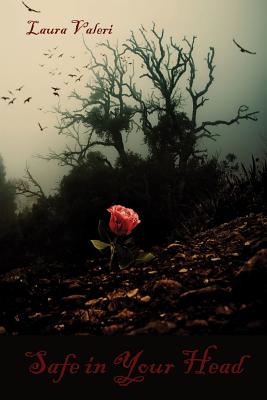 We want to find those peculiar, yet recognizable moments that make stories memorable. We are on the look out for what Charlest Baxter describes in his essay “On Defamiliarization,” that moment when a character does or says something that is so utterly unfamiliar and unusual that we catch a glimpse of that Stranger inside each one of us … and to capture the moment that follows that discovery, the reeling in back into the familiar. (We review this and other essays early in the course, well before preparation of the assignment, to help students train to recognize the kind of actions that separate an episode from a good story.)
We want to find those peculiar, yet recognizable moments that make stories memorable. We are on the look out for what Charlest Baxter describes in his essay “On Defamiliarization,” that moment when a character does or says something that is so utterly unfamiliar and unusual that we catch a glimpse of that Stranger inside each one of us … and to capture the moment that follows that discovery, the reeling in back into the familiar. (We review this and other essays early in the course, well before preparation of the assignment, to help students train to recognize the kind of actions that separate an episode from a good story.)
That is why oral narratives are an inflexible requirement for this assignment. When, in the past, I used to allow students to draw from third person documentations, like textbooks or court transcripts, stories that arose from those sources felt distant in disturbing ways, with cardboard characters dressed up in historical clothes who acted with archetypal motivations typical of thirty minute television shows. By contrast, stories born of oral narratives reflected far more empathy, far more nuanced understanding of difficult situations. The testimonies help students to flesh out history and fact with human perception and human emotion, texturing with complexity what might otherwise be too grey a picture.
Throughout the process, students are reminded to take note of those moments in the narratives that they found most memorable: invariably, involving telling images that suggest complex emotional or psychological ramifications beyond the details described. They are encouraged to use those anecdotes as inspirational starting points from which to imagine their stories.
For instance, one of my students adopted a narrative from the early 1960’s civil rights era: a drunken white man trespassed into the backyard of an African American boy and took offense when the boy’s dog barked at him and wouldn’t let him pass out, so he called the police and told them the dog had attacked him. The police promptly shot the dog. My student rolled the anecdote inside a different context, one involving an interracial romance in rural Georgia in the early 1970’s. The shooting of the dog, then, was cast into the drama of the town’s outrage, the white people’s show of intimidation towards the boy for attempting to cross boundaries. My student learned to “steal like an artist” by borrowing that anecdote and weaving it into an imagined context.
After listening to several narratives organized around a particular time period, students begin to have a collection of images that they can arrange and expand on to create an original story. They’re then instructed to keep a journal for a minimum of twelve consecutive days. In this journal they’re encouraged to use drawings and maps, photos and other artifacts that they may collect around the time period that will help them more fully imagine the textures and details of these people’s lives. The narrative of the journal must also be in first person, written from the perspective of a protagonist, who, though inspired at first by the source materials, should have a different identity and life story than the person whose narrative they’re using as foundation for their research.
In the early incarnations of this assignment, where I had not made this differentiating requirement quite so explicit and non-negotiable, one of my students chose to write the true story of a woman Sargent in the Gulf War whose dear friend died in an IED explosion in Iraq, possibly as a consequence of a command she’d issued. The student had written what amounted to a dramatization of the person’s real life story, with enough imagined detail to earn the fiction designation, but too close to the truth for ethical comfort.
Although the story was extremely successful, winning the student national accolades, the student and I had to have several heart to hearts about the ethical boundaries she was negotiating. I was proud that my student chose to send the story to the Sergeant before she sent it out for publication, but I have since incorporated a vigorous discussion about ownership, truth in fiction, and about the ethical nuances of writing another person’s story.
We fiction writers often talk with each other about the potential of law suits and legal loopholes, but we too seldom engage in productive discussions about what gives us a right to purloin not just from people’s personal lives, but also from history. Calling what we write fiction does not always protect us from what might amount to difficult choices that can have reverberations beyond scandal in the small circle of our friends and relatives, beyond lawsuits and other monetary concerns. In the classroom, we don’t always solve the problem; but in the least, the assignment empowers us to ask questions and to engage in frank discussion.
Plenty of stories from these workshops have found recognition in small magazines. Some have earned scholarships and monetary prizes. Yet, to me, the most unambiguous indication of a success is that our workshops engage in the type of questions that will resonate with these young writers long after the class is over, questions about the accuracy in reflecting the spirit of a time, about the emotional truth of a scene, or about the delicate boundaries between what we know happened, and what we want our readers to imagine; questions that invite us to take responsibility for the writing we produce, and to do so with courage and vision.

